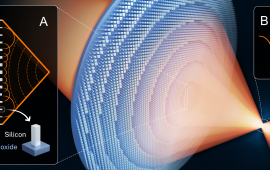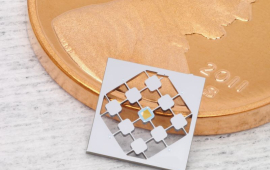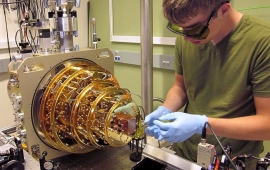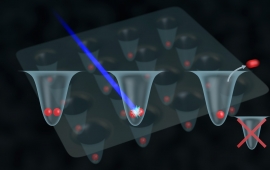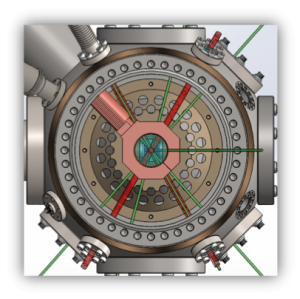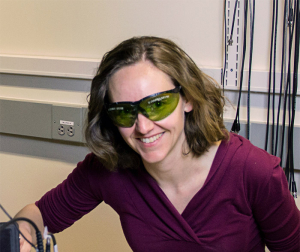Laser cooling of atoms uses radiation forces of light to push on atoms, and has revolutionized atomic physics. In our work, in a field known as optomechanics, we now have the capacity to cool vibrations of mesoscopic objects using radiation pressure combined with cryogenic cooling. We pick out particular nanomechanical modes of the solid that are well-isolated from their…
The Regal Group
Research Highlights
Stories About Our Research
Our quantum systems explore the frontiers of control in atomic, optical, and mesoscopic physics. We laser cool the vibrations of mechanical objects that can measure displacements and extremely small forces at quantum limits. We are able to entangle and interfere single atoms placed atom-by-atom in identical quantum states. Our work enables transduction between disparate quantum systems and exploration of quantum many-body physics.
We are grateful for funding for our research from these agencies
Research Areas
Electro-optic devices are ubiquitous in classical optical systems. In the quantum domain, an electro-optic device would also be very handy, for example, to transduce states created with superconducting quantum bits (qubits) to optical light. However, at the moment no electro-optic component exists that is low enough noise and efficient enough to work with quantum states.
We are building a new apparatus that will study large quantum systems of Rydberg atoms in optical tweezers harnessing a cryogenic, high-vacuum environment. This work is collaboration with the Kaufman group at JILA. Check back for more information!
We are studying a quantum system of bosonic 87Rb atoms in optical tweezers assembled particle-by-particle. We have shown optical tweezers can be used to confine atoms sufficiently to place them in their motional ground state via Raman sideband laser cooling. With this ability, we make bosonic atoms indistinguishable in all but their positional degree of freedom, and…
In the Spotlight
The U.S. Department of Energy (DOE) has announced a $625 million investment to advance the next phase of the National Quantum Information Science Research Centers, a cornerstone of the National Quantum Initiative. This funding will support five centers dedicated to accelerating quantum technologies that promise transformative impacts on science, industry, and national security. JILA is proud to remain a key partner in QSA through the Q-SEnSE Center, which focuses on quantum sensing and precision measurement.
Read More
Professor Cindy Regal, Baur-SPIE Chair at JILA, has been named a 2025 Brown Investigator by the Brown Institute for Basic Sciences at Caltech.
Read More
On June 20, 2024, the U.S. National Science Foundation awarded JILA and the University of Colorado Boulder a $20 million grant to create the National Quantum Nanofab (NQN), a cutting-edge facility poised to revolutionize quantum technology.
JILA Fellow and University of Colorado Boulder physics professor Cindy Regal remarked, "The NQN will be a unique facility for quantum discoveries and technology. I look forward to seeing the NQN as a national resource in quantum and interfacing with a wide range of JILA research.”
Read More
Regal is the first recipient for JILA's new endowed chair in optics and photonics.
Read More
JILA Address
 We are located at JILA: A joint institute of NIST and the University of Colorado Boulder.
We are located at JILA: A joint institute of NIST and the University of Colorado Boulder.
Map | JILA Phone: 303-492-7789 | Address: 440 UCB, Boulder, CO 80309









